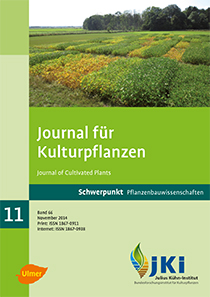Feasibility of strip-tillage for field grown vegetables
Keywords:
White cabbage, Brassica oleracea convar. capitata var. alba, Conservation tillage, RTK-GPS, Soil erosion, Gravimetric water content, Bulk density, Penetration resistanceAbstract
Row crops and field grown vegetables, such as white cabbage (Brassica oleracea convar. capitata var. alba), are affected by soil erosion caused by rainfall energy. Conservation tillage, such as strip-tillage, is the most effective way to reduce soil erosion. Hence, the objectives of this study were to develop and modify the strip-tillage system for white cabbage and lettuce (Lactuca sativa var. capitata L.), and to assess its potential towards controlling soil erosion. In 2011 and 2012 rainfall simulations showed significantly lower soil loss under strip-tillage (ST) than under the moldboard plow (MP). Soil loss under MP was 512 g m–2 in 2011 and 210 g m–2 in 2012, while ST reduced soil loss by 80% in 2011 and 90% in 2012. The ST sampling positions for soil property assessments were in the non-tilled zone i.e. between the planting row (ST_BR) and the tilled zone, within the planting row (ST_IR). Top soil bulk density (010 cm) was lowest in ST_IR (1.24 g cm–3), followed by MP (1.33 g cm–3) and ST_BR (1.53 g cm–3). Penetration resistance in the top soil was also lowest in ST_IR followed by MP and ST_BR. Plant available water [L m–2] from 0–40 cm was higher in ST_BR compared to MP and ST_IR. In 2011 average cabbage head weight was not affected by tillage treatment. In 2012 the cabbage head weight was significantly higher in ST (1.85 kg) than in MP (1.62 kg). The results show that strip-tillage can be a viable option for crops which are exposed to an erosion risk, such as white cabbage.
DOI: 10.5073/JfK.2014.11.01, https://doi.org/10.5073/JfK.2014.11.01








